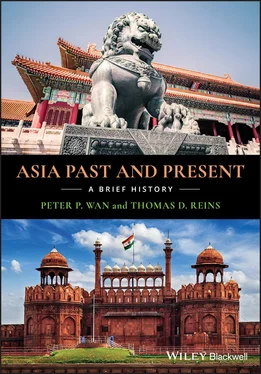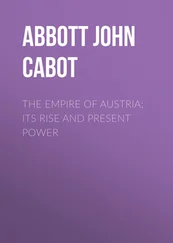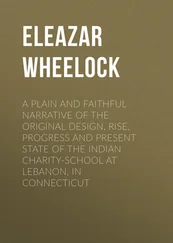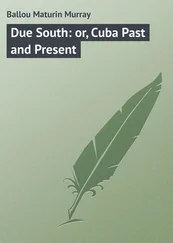Archaeological discoveries suggest that humanlike beings inhabited the Korean Peninsula as far back as 700,000 BCE, they entered the Stone Age around 500,000 BCE, local bronze production began around the eighth century BCE, and local iron production began around the third century BCE.
Timeline: Premodern Korea to 1897
| 700,000 BCE |
Humanlike beings appear on the Korean Peninsula |
| 10,000 BCE |
Paleolithic hunters and gatherers of the Old Stone Age |
| 1500 BCE |
Agricultural villages appear; rice cultivation introduced from China 1200–900 BCE |
| 800 BCE |
Bronze Age begins |
| ca. 4th century BCE |
GoJoseon Dynasty established; centralized kingdom |
| 3rd century BCE |
Iron Age begins |
| 200–100 BCE |
Jin State emerges in southern Korean Peninsula |
| 194–198 BCE |
Wiman Joseon Dynasty founded by defeated rebel Han Chinese general at Pyongyang |
| 109–108 BCE |
China’s Han Wudi, the Martial Emperor, unseats Wiman Joseon Dynasty and sets up Four Chinese Commanderies |
| 57 BCE–668 CE |
Three Kingdoms |
|
37 BCE–668 CE: Goguryeo |
|
57 BCE–935 CE: Silla |
|
18 BCE–660 CE: Baekje |
| 698–926 |
Northern and Southern Dynasties |
|
668–935: Unified Silla |
|
698–926: Unified Balhae |
| 892–936 |
Later Three Kingdoms: Silla, Later Baekje, and Later Goguryeo |
| 918–1392 |
Unified Goryeo, from where the English word “Korea” comes |
| 1234 |
Metal, moveable‐type printing press invented |
| 1270–1350s |
Mongol conquest |
| 1392–1897 |
Unified Yi Joseon Dynasty |
| 1402 |
Paper currency in circulation |
| 1424 |
Compilation of History of Koryo completed |
| 1446 |
Hangeul, the Korean phonetic spelling system, adopted |
| 1592, 1598 |
Toyotomi Hideyoshi attempts to conquer Korea but is defeated by Korean Admiral Yi Sun‐sin’s “turtle boats” |
| 1627, 1636 |
Manchu Qing China invades Korea and turns it into a tributary state |
| 1880s–1890s |
China and Japan work to keep Russia out of Korea |
| 1894–1895 |
Japan defeats China in the First Sino‐Japanese War, ending Korea’s tributary and protectorate status |
| 1897 |
Yi Joseon Dynasty collapses; Korean Empire created |
The earliest forms of agricultural society on the Korean Peninsula had emerged by 1500 BCE. Villages surfaced and grew into societies led by chieftains. In southern Korea, they engaged in intensive agriculture in dry and paddy fields, and grew a multitude of crops, such as millet, red bean, soybean, and rice. As was the case in other civilizations, bronze was only used to make weapons and ceremonial items, but not farm tools. Most of the population lived in rectangular pit‐houses, but walled cities were already appearing. Dolmen burial sites became increasingly elaborate and numerous. (A dolmen is a single‐chamber megalithic tomb for the burial of important persons. Over 40% of the world’s dolmens are found on the Korean Peninsula.)
Korean mythology has it that the first Korean state, often called the GoJoseon Dynasty, was founded in 2333 BCE by the son of the Divine Creator and a female bear in human form. Modern historians generally agree that the GoJoseon Dynasty became a centralized kingdom before the fourth century BCE. ( Note : In Korean, “Joseon” means “Land of the Morning Calm,” and “go” means “ancient.” To combine “Go” and “Joseon” distinguishes this ancient Joseon dynasty from the Yi Joseon Dynasty of the fourteenth century.)
A defeated rebel general of China’s Han Empire fled to Korea and founded the Wiman Joseon Dynasty (194–108 BCE). It was a Sinicized state whose capital was at Pyongyang (today’s capital of North Korea) and whose territory straddled the northern part of the Korean Peninsula and part of Manchuria (in modern China’s northeast) and Mongolia. The Han Martial Emperor’s troops unseated it and established four Chinese military commanderies in 109–108 BCE; two of these, the Xuantu and Lelang Commanderies, were in existence for another four centuries before they were overrun by indigenous Korean forces in 302 and 313 CE, respectively. The existence of these Chinese military colonies in Korea for a total of five centuries left its mark on Korean culture. A parallel can be drawn between these outposts and those of the ancient Romans in the lands of the Gaulish and Germanic peoples.
The Chinese‐controlled territories in the northern regions coexisted with three Korean kingdoms to the south: Silla (57 BCE–935 CE), Goguryeo (37 BCE–668 CE), and Baekje (318 BCE–660 CE). When China’s Han Empire fell in the early third century, the three Korean kingdoms fought one another for dominance. The Silla Kingdom strengthened its hand by forming an alliance with China’s Tang Empire, defeated its rivals, and then expelled the Chinese forces. It achieved the unification of most of the Korean Peninsula (676), accepted the status of vassal state to China’s Tang Empire, and embraced a policy of wholesale borrowing from China. It sent frequent and large missions to China, who brought Chinese ways back to Korea. It built a centralized bureaucratic government, adopted Confucianism as its state ideology, and used Han Chinese as its official language. It adopted a land policy that nationalized all land ownership, and then distributed it to government officials and peasants. This policy granted large concentrations of land to high government officials, and tied the peasants to the land, subjecting them to the burden of taxes and labor service. Although the Silla borrowed extensively from China, it nevertheless was successful in resisting Chinese political control and defending its cultural identity. The Silla Dynasty imported Buddhism, and began building temples and shrines, casting huge bells in bronze and iron, and carving stone Buddhas. Korean monks traveled to China to study Buddhism, and their missionaries crossed the ocean to make Japanese Buddhist converts. Korea was a bridge in the transfer of Chinese civilization to Japan.
The Silla Dynasty was wiped out in a palace coup and replaced by the Goryeo Dynasty (918–1368). (The English word “Korea” is derived from “Goryeo.”) The Goryeo Dynasty moved its capital south to a location near modern Seoul, the capital of today’s South Korea. It built an elaborate capital, set up a centralized government bureaucracy, and installed an imperial examination system, all on Chinese models. But the Korean examination system was much more aristocratic than the Chinese original: High office was reserved for high‐ranking aristocratic families. Korea produced the world’s first document printed by a metal movable‐type printing press (1234). They later used the metal movable‐type printing press to reproduce their libraries that had been destroyed by the Mongols. Although the Chinese had invented the technique of movable‐type printing in the mid‐eleventh century, it had failed to put it to wide use. The Koreans were the first to use this technology with the added innovation of metal type to print large numbers of books.
The Goryeo Dynasty tottered after the palace guard carried out a massacre of its royal court. Military strongman General Choe Chung‐han assumed the role of de facto ruler of Korea, but allowed the Goryeo king to continue to reign in name.
Читать дальше












